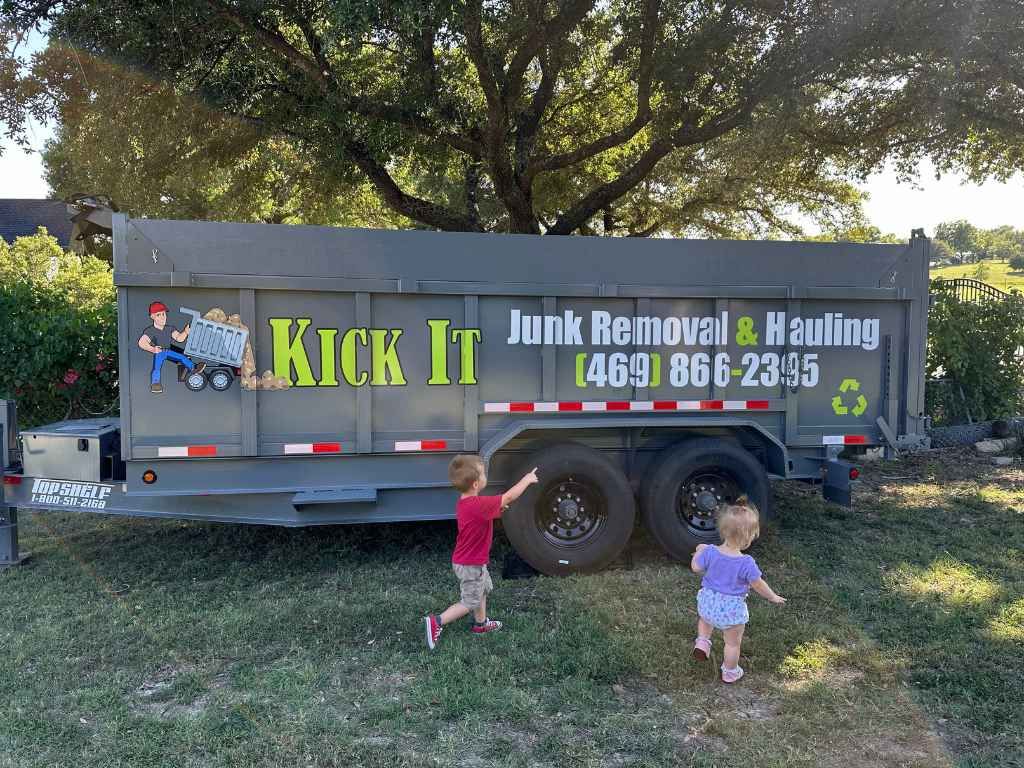The Role of E-Waste in Environmental Sustainability
In today's digital age, our reliance on electronic devices has surged, leading to an unprecedented accumulation of electronic waste, or e-waste. Items like outdated smartphones, defunct laptops, and obsolete appliances often end up in landfills, posing significant environmental risks due to hazardous materials such as mercury and lead. Proper disposal and recycling of these electronics are crucial to mitigate environmental harm and recover valuable resources.
Many companies are stepping up to address this challenge. By offering specialized electronics recycling services, they ensure that e-waste is handled responsibly, reducing landfill contributions and promoting sustainability. Their commitment to eco-friendly practices not only aids in environmental conservation but also supports community health and resource efficiency.
Understanding the Impact of E-Waste on Our Environment
In today’s world, e-waste has become one of the fastest-growing environmental concerns. As technology evolves rapidly, millions of electronic devices like phones, computers, and televisions are discarded every year. These items contain hazardous materials like lead, mercury, and cadmium, which can leach into the soil and water when improperly disposed of, creating significant environmental harm. This not only contaminates natural ecosystems but also threatens the health of wildlife and humans.
Proper disposal and recycling of e-waste can help mitigate these negative impacts. Many of the metals and materials found in electronics, such as gold, copper, and aluminum, are valuable and can be reused. By recycling e-waste, we reduce the strain on natural resources and prevent further environmental damage, making responsible e-waste management crucial for a sustainable future.
How E-Waste Contributes to Environmental Sustainability
E-waste, if not properly managed, contributes to pollution and environmental degradation, affecting both the land and the air. Electronic products often end up in landfills, where they release harmful chemicals into the environment. These chemicals can contaminate groundwater and soil, creating lasting effects on both ecosystems and human health. As the demand for new technology increases, so does the volume of e-waste, which continues to grow unchecked without proper recycling infrastructure.
However, e-waste recycling plays a crucial role in promoting sustainability. By recycling old electronics, valuable materials can be recovered, reducing the need for mining new resources. This not only conserves natural resources but also reduces carbon emissions associated with the production of new materials. With responsible e-waste management, we can reduce pollution, conserve energy, and promote a more sustainable approach to technology use.

The Environmental Challenges Posed by E-Waste
As technology continues to evolve, the problem of e-waste becomes more pressing. Old electronics, including cell phones, computers, and televisions, often contain toxic substances that can leak into the environment when improperly disposed of. This creates long-term environmental problems, as these harmful chemicals can poison the land, air, and water. Additionally, e-waste contributes significantly to global waste accumulation, placing pressure on landfills and recycling systems that are not always equipped to handle such specialized waste.
The challenge of e-waste lies not only in the environmental damage it causes but also in the rapid pace at which technology becomes obsolete. With millions of devices being discarded every year, it’s vital for consumers and companies alike to understand the importance of proper e-waste disposal. By focusing on e-waste recycling programs, we can reduce harmful effects on the environment while conserving valuable resources for future generations.
The Growing Role of E-Waste in Sustainable Practices
E-waste plays a significant role in environmental sustainability, but its growing prevalence presents challenges. As more people adopt new technologies, old electronics are often discarded, contributing to the increasing volume of e-waste. This waste contains hazardous substances that, when improperly disposed of, can leach toxins into the environment, endangering both human health and wildlife. The rapid advancement of technology is creating a cycle of consumption, where new devices replace old ones, adding to the burden of e-waste.
However, sustainable practices like recycling and reusing electronics can help break this cycle. By recovering valuable materials from e-waste, such as precious metals and components, we reduce the need for raw material extraction and the energy required to produce new devices. Recycling e-waste not only prevents environmental contamination but also supports the development of a more circular economy, where resources are reused instead of wasted.
Why Proper E-Waste Disposal is Essential for Sustainability
Improper disposal of e-waste poses serious risks to the environment and human health. Electronics contain toxic materials such as mercury, lead, and cadmium, which, when left to degrade in landfills, can leak into soil and water supplies. This contamination can have devastating long-term effects on local ecosystems and communities. As e-waste continues to grow, the need for responsible disposal becomes even more critical to prevent widespread environmental harm.
Proper e-waste disposal, including recycling and repurposing old electronics, is essential for sustainability. By diverting e-waste from landfills and processing it through certified recycling programs, we can recover valuable materials and minimize environmental harm. Sustainable e-waste disposal helps preserve natural resources, reduces carbon emissions, and fosters a circular economy, where the life cycle of electronic products is extended, benefiting both the environment and society as a whole.
The Connection Between E-Waste and Environmental Protection
E-waste is a growing concern that directly affects environmental protection. Electronics such as old phones, televisions, and computers often contain harmful chemicals and metals that, if not properly recycled, can pollute the environment. These toxins can enter the air, water, and soil, posing significant risks to ecosystems and human health. As the demand for technology continues to increase, the volume of e-waste grows, amplifying the need for effective disposal and recycling solutions.
Recycling e-waste is an effective way to protect the environment and reduce the strain on natural resources. Many of the materials in electronics, including metals and plastics, can be reused in the production of new products. By recycling e-waste, we not only reduce pollution but also conserve resources and reduce the need for mining and manufacturing, ultimately supporting environmental sustainability.
How E-Waste Recycling Helps Save the Planet
E-waste recycling is a key solution to the growing environmental problem of electronic waste. Every year, millions of electronic devices are discarded, many of which contain hazardous materials that can pollute the environment if not properly disposed of. These materials, such as mercury and cadmium, pose significant risks to soil and water quality. However, e-waste recycling offers an opportunity to prevent this pollution by safely processing old electronics and recovering valuable materials.
By recycling e-waste, we also help reduce the demand for raw materials like metals and plastics, which are often extracted through environmentally damaging methods. This reduction in resource extraction helps lower carbon emissions and conserve natural habitats. E-waste recycling, therefore, not only reduces pollution but also conserves resources, making it an essential practice for protecting our planet.
The Importance of Responsible E-Waste Management for Our Future
E-waste management is crucial for the protection of our environment and future generations. As technology advances, more and more electronic devices are becoming obsolete, contributing to an ever-growing pile of e-waste. If not properly handled, this waste can release toxic substances into the environment, polluting air, soil, and water. Improper disposal of electronics, such as throwing them in landfills or incinerating them, exacerbates the problem, making responsible e-waste management a top priority for sustainability.
Responsible e-waste management involves recycling and reusing valuable materials found in electronic devices, reducing the need for raw material extraction and lowering the environmental impact of manufacturing. By supporting e-waste recycling programs, we can minimize pollution, conserve natural resources, and reduce our carbon footprint. This practice is essential for building a more sustainable and eco-friendly future.
How E-Waste Recycling Contributes to a Greener World
E-waste recycling plays a pivotal role in creating a greener world by reducing the environmental impact of discarded electronics. As technology becomes more advanced, the rate at which devices are replaced increases, leading to a rise in e-waste. Many of these electronics contain hazardous substances that can contaminate the environment if not properly recycled. However, through responsible e-waste recycling, we can safely dispose of these materials and prevent environmental damage.
Recycling e-waste not only helps reduce pollution but also recovers valuable materials like metals, plastics, and glass, which can be used in the production of new products. This reduces the need for mining and lowers energy consumption, making e-waste recycling an essential part of a circular economy. By embracing e-waste recycling, we contribute to a greener and more sustainable planet.
Tackling E-Waste to Promote Environmental Sustainability
Tackling e-waste is essential for promoting environmental sustainability in our modern world. As technology rapidly evolves, outdated electronics such as smartphones, laptops, and televisions are discarded at alarming rates. Many of these devices contain toxic substances that can harm the environment if they are not properly managed. Without proper disposal methods, e-waste can end up in landfills, where it can release hazardous materials into the ecosystem, affecting both land and water.
By adopting effective e-waste recycling programs, we can reduce the harmful environmental impact of discarded electronics. Recycling helps recover valuable metals and materials, reducing the need for new resources and minimizing energy consumption. By managing e-waste responsibly, we promote sustainability, protect the environment, and reduce our ecological footprint, ensuring a healthier planet for future generations.
Conclusion
E-waste recycling is a simple but powerful way to protect the environment and conserve valuable resources. Instead of letting electronics end up in landfills, you can make a real difference by choosing responsible disposal.
Kick It Junk Removal & Hauling makes it easy to do your part. Based in Forney, Texas, we offer eco-friendly junk removal and e-waste recycling services you can count on. Call us at 469-866-2395 or email Paul@kickitservices.com to schedule your pickup today.











